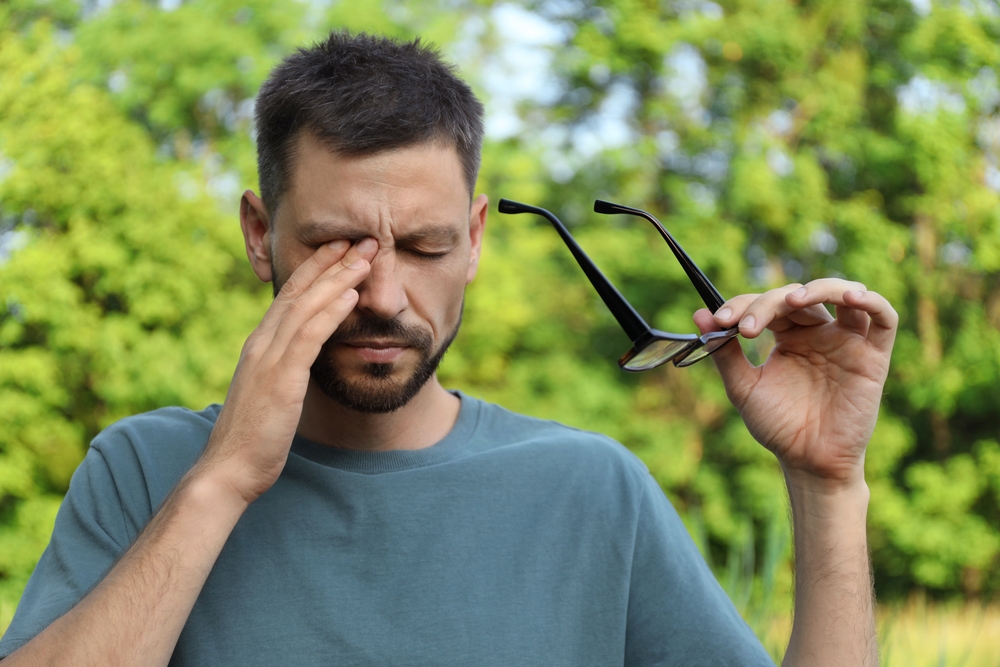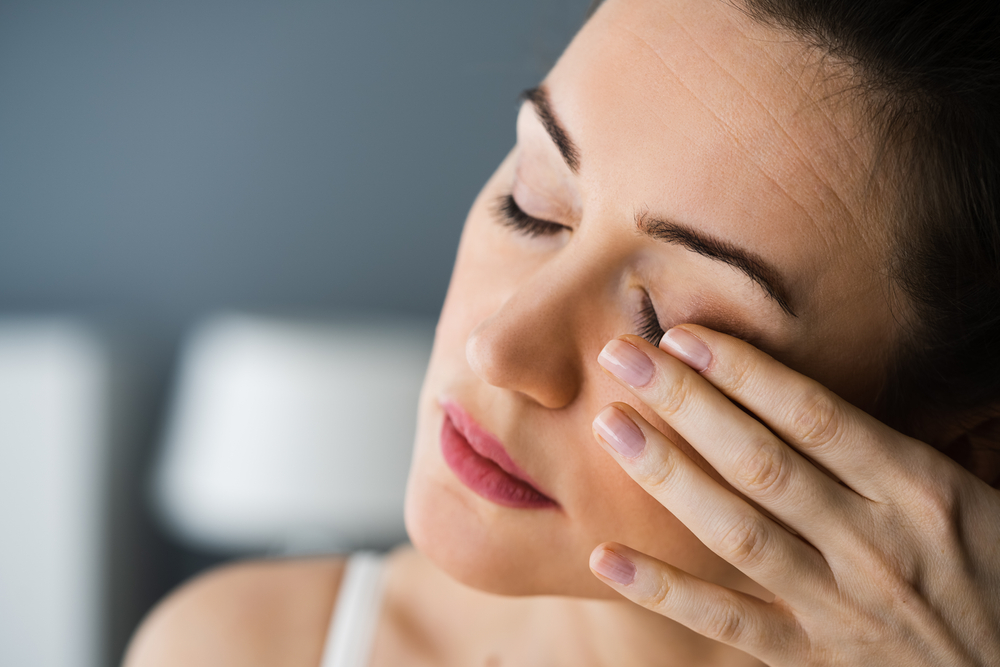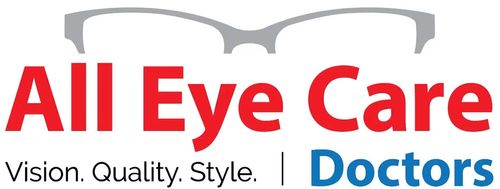
Have you been dealing with scratchy, burning, or irritated eyes and keep telling yourself, ‘it’s just allergies’ or ‘it’ll go away on its own’? Many people dismiss early dry eye symptoms, hoping they’ll resolve naturally.
However, ignoring these warning signs can lead to more serious complications that become increasingly difficult to treat. Keep reading to learn what happens when dry eye goes untreated!
What is Dry Eye?

Dry eye syndrome is a chronic condition that occurs when your eyes don’t produce enough tears or when the tears you do produce are of poor quality. Your tears are made up of three layers: water, oil, and mucus. When any of these components are out of balance, your eyes can’t stay properly lubricated.
The most common cause of dry eye is Meibomian gland dysfunction (MGD), where the tiny glands in your eyelids that produce the oily layer of tears become blocked or don’t function properly. Without this oil layer, your tears evaporate too quickly, leaving your eyes dry and uncomfortable.
Symptoms can range from mild irritation to severe discomfort that interferes with daily activities. Common signs include burning or stinging sensations, redness, blurry vision, feeling like something is in your eye, excessive tearing (your eyes overcompensate for dryness), and sensitivity to light.
How Do I Know If I Actually Have Dry Eye or Just Occasional Dryness?
Everyone experiences occasional eye dryness from time to time, especially in windy conditions or after staring at a computer screen for hours. So how do you know when it’s something more serious?
The key difference lies in frequency, severity, and impact on your daily life. Occasional dryness typically happens in specific situations and resolves quickly once you remove yourself from the triggering environment or take a break from screen time.
Dry eye syndrome, on the other hand, is persistent and often gets progressively worse. You might notice symptoms occurring daily, lasting for extended periods, or interfering with activities like reading, driving, or working on a computer.
The discomfort may be more intense and doesn’t improve significantly with basic remedies like blinking more or using occasional lubricating drops.
Pay attention to patterns in your symptoms. Do they occur at the same time each day? Are they worse in certain environments or after specific activities? Do they persist even when you’re well-rested and not looking at screens? If you’re experiencing consistent discomfort for more than a few days, or if symptoms are affecting your quality of life, it’s worth having a professional evaluation.
Is the Damage from Untreated Dry Eyes Permanent?

This is one of the most important questions patients ask, and the answer depends largely on how long the condition goes untreated and its underlying severity.
In the early stages, dry eye damage is often reversible with proper treatment. Your tear glands and the surface of your eyes have remarkable healing abilities when given the right support. However, chronic, untreated dry eye can lead to progressive damage that becomes increasingly difficult to reverse.
When your eyes lack adequate lubrication for extended periods, the surface of your cornea can develop microscopic scratches and scarring. Your body may respond to chronic inflammation by producing even fewer quality tears, creating a cycle that’s harder to break.
The meibomian glands in your eyelids can become permanently damaged if blockages aren’t addressed, leading to long-term tear film instability.
In severe cases, untreated dry eye can result in corneal ulcers, increased risk of eye infections, and even vision problems. Some patients develop painful scarring on the eye’s surface that can affect visual clarity permanently.
The good news is that most people who seek treatment before reaching these advanced stages can experience significant improvement. Early intervention is key to preventing permanent damage and maintaining comfortable, healthy vision.
When Should I See a Doctor About My Dry Eye Symptoms?
Knowing when to seek professional help can prevent minor discomfort from becoming a major problem. You should schedule an appointment with your eye doctor if your symptoms persist for more than a few days despite using over-the-counter lubricating drops, if the discomfort is severe enough to interfere with daily activities, or if you’re experiencing vision changes along with dry eye symptoms.
Other red flags include symptoms that are getting progressively worse, eye pain rather than just discomfort, discharge from your eyes, or if you have underlying conditions like autoimmune disorders that can contribute to dry eye.
Don’t wait until your symptoms become unbearable. Early professional intervention can often resolve dry eye issues more quickly and completely than waiting until the condition becomes severe.
An eye care professional can determine the underlying cause of your dry eyes and create a treatment plan tailored to your specific situation.
How Do Eye Doctors Treat Dry Eye?

Eye doctors now have several advanced treatment options that address the root causes of dry eye rather than just managing symptoms.
For patients with meibomian gland dysfunction, treatments like LipiFlow offer targeted relief. This procedure uses gentle heat and controlled pressure to unclog blocked oil glands in your eyelids, restoring healthy tear production. The treatment is performed in the office, takes about 12 minutes, and many patients notice improvement within days.
Intense Pulsed Light (IPL) therapy represents another breakthrough in dry eye treatment. Originally used for skin treatments, IPL has been adapted specifically for dry eye management. The treatment uses light pulses to reduce inflammation around the eyelids and improve gland function.
For some patients, prescription medications like anti-inflammatory eye drops or medications that help increase tear production may be recommended. These work by addressing the underlying inflammation that often drives dry eye symptoms.
Your eye doctor might also recommend specific types of artificial tears, lifestyle modifications, or nutritional supplements based on your individual situation. The key is that treatment is customized to address your specific type and severity of dry eye.
Are you experiencing dry eye symptoms? Schedule an appointment at All Eye Care Doctors in Medford, Cambridge, Burlington, Chestnut Hill, or Wellesley, MA, to get the relief you deserve before temporary discomfort becomes a lasting problem.

